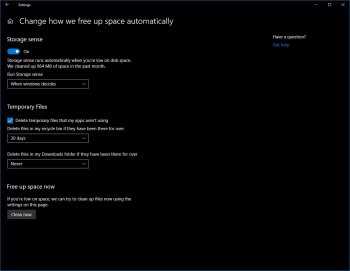Add-on:I personally don't mind Windows as a platform once your machine is setup the way you like it.
If you do go to Windows, I would recommend getting one of the machines from the Microsoft Store that's labeled Signature Edition. This means its just Windows, without any bloatware. Most machines these days come preinstalled with a myriad of junk that you have to spend time removing. I mean yes you could leave it on, but you never know if any of these apps are doing things they shouldn't. Plus if you have things loading when Windows loads, its using extra memory and CPU that could be put towards more important tasks.
The second thing I would mention are drivers. For the most part in OS X, you plug something in and it automatically loads the appropriate driver (kext), or for printers say, automatically downloads the software. Windows has got a lot better with this in recent years but I can't comment on Windows 10 as I haven't used this feature yet.
There's a good video from Linus Tech Tips regarding Windows scaling and explaining why its so bad. You can see it here:
The fourth thing I'd like to mention which has been mentioned above by others, are Windows Updates. Usually we're pretty lucky in OS X that we only have point releases, which are installed as and when they come out. Windows on the other hand has Patch Tuesday. Patch Tuesday occurs on the second, and sometimes fourth, Tuesday of each month. When Microsoft regularly releases security patches for its software products. So you are prompted far more often to install hotfixes, security updates and other updates. Some updates break things sometimes and you might spend ages Googling and reading through the release notes of what are released in an attempt to fix whatever broke (we have to do this ALL the time at work and I'd say at least three times this year a Windows patch has broken something in production). Again, probably not so much of an issue for a home user, but still an annoyance none-the-less.
Finally - the way Microsoft have changed the deployment method of Windows 10. Every 6 months or so a BIG update comes out. The migration from one version to another is pretty painless compared to the past, but I still find it annoying. Basically Windows Update will download this update in the background once released and then prompt you to install. Its like installing a brand new version of Windows and them migrating your data and apps over. On slow machines, it can literally take hours and hours and hours. The clean up doesn't seem to happen automatically from what I've found. Generally when a big Windows 10 update comes down, my partners machine has a WINDOWS.OLD directory in C:\, its there just in case something doesn't work out and you have to roll back. Its a good idea in principle, but I've found that it leaves about 19GB of old stuff around which I've never disappears on its own. I could be mistaken but I am only going on my own personal experience. OS X installer does a nice job of cleaning up after a big update which is generally on a once yearly basis.
I hope this helps
After a ' big' install Windows keeps the 'old' directory for 2 months (in case you want to roll back). After 2 months it is removed automatically by Windows (so Windows actually does clean up after itself). Before that you can allways remove it yourself with Window's built in disk cleaning tool.
EDIT: I made a mistake. Windows keeps the old directory for 1 month instead of 2.
Last edited:


